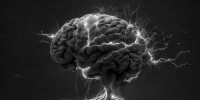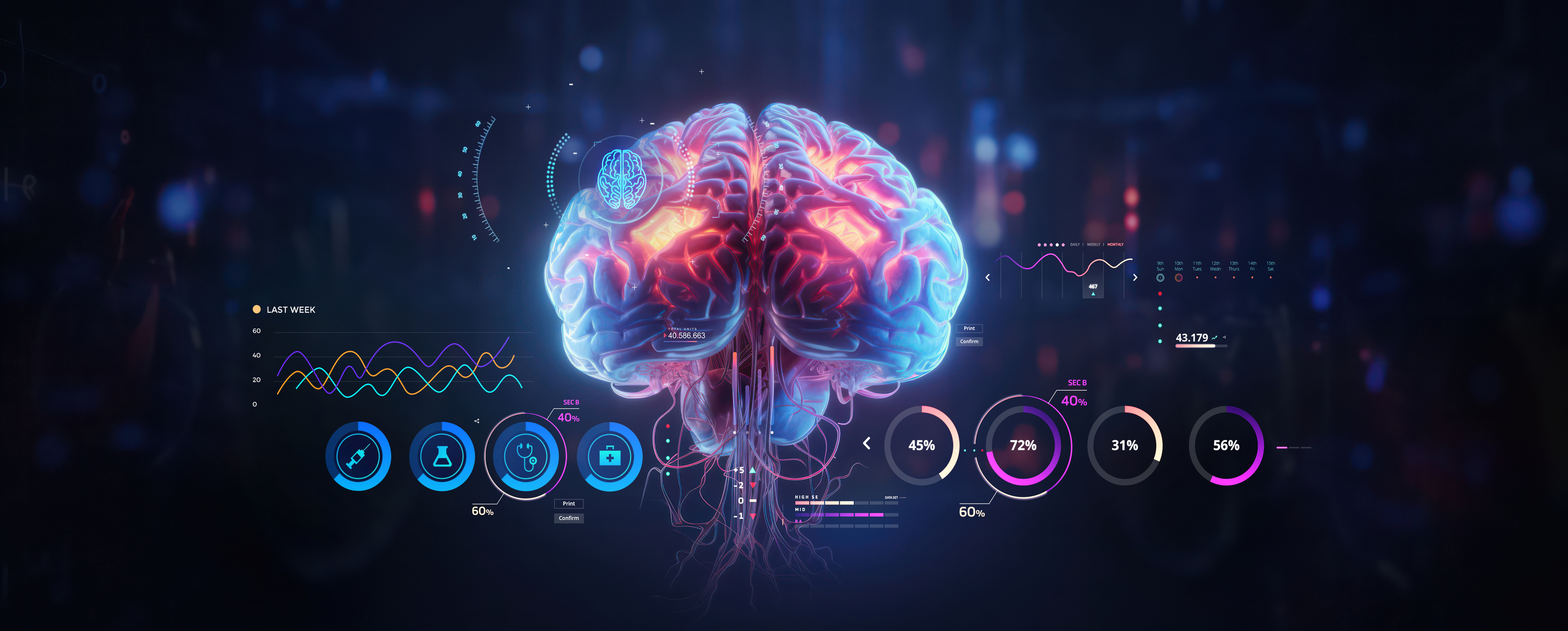
Brain Imaging Biomarkers for Mental Illness
A new study has identified brain imaging-based biomarkers that could be used to improve the diagnosis and treatment of mental illness in adolescents. These biomarkers could help to identify individuals at risk of developing psychiatric disorders, even before symptoms emerge. They could also be used to monitor the effectiveness of treatment and to identify individuals who need to adjust their treatment plans.
Scientists Identify New Biomarkers For Mental Illness Using Brain Imaging
A new brain imaging-based biomarker could improve the diagnosis and treatment of mental illness in adolescents.
The biomarker is a pattern of resting-state functional connectivity (rsFC) that is associated with both cognitive function and psychopathology.
The biomarker was identified in a large study of children aged 9–10 years.
It was associated with a broad range of cognitive and psychopathological measures, regardless of the specific psychiatric diagnosis.
This suggests that the biomarker may be a common neurobiological substrate of cognitive function and psychopathology.
The findings of this study are encouraging because they could lead to new ways to diagnose and treat mental illness in adolescents. For example, the biomarker could be used to screen for the risk of developing psychiatric disorders, monitor the effects of treatment, and identify individuals who need to adjust their treatment plans.
The findings are also relevant in the context of the post-COVID era, where mental illness in adolescence is a growing concern. By investing in research on brain imaging-based biomarkers, we can develop new tools and interventions to improve the mental health of adolescents.
 The brain is the organ of destiny. It holds within its humming mechanism secrets that will determine the future of the human race.
The brain is the organ of destiny. It holds within its humming mechanism secrets that will determine the future of the human race.
The diagnosis and treatment of psychiatric disorders such as depression have long presented challenges due to the subjective assessment of symptoms. However, recent research has opened new avenues by examining biomarkers—objective biological or physiological markers—to improve our understanding and management of mental illness.
In a groundbreaking study published in the journal Biological Psychiatry, researchers used a large dataset to identify predictive brain imaging-based biomarkers of mental illness in adolescents. This innovative approach promises to improve the diagnosis, prediction, and treatment of psychiatric disorders.
The researchers used data from the Adolescent Brain Cognitive Development (ABCD) study, which initially included almost 12,000 children aged 9 to 10 years. Modern neuroimaging techniques enabled the researchers to examine the inner workings of the human brain.
The results of the study shed light on the complex relationship between cognition and mental disorders. One notable finding was the predictive power of the brain imaging-based biomarker. It predicted the number of psychiatric disorders identified in the participants both at the time of the brain scan and over the following two years.
These findings could be a valuable tool to understand and address psychiatric disorders across different diagnostic categories. In the context of the post-COVID era, where mental illness in adolescence is increasingly seen as a key health challenge, these findings are of paramount importance.
Mental Matters: Making Sense of the Significance of Sound Mental Health
The importance of mental health can hardly be overestimated. It influences how we think, how we feel, how we deal with stress, and how we interact with others. Good mental health is integral to our overall well-being and our ability to lead a fulfilling and productive life. Despite its great importance, the diagnosis and treatment of mental illness remain one of the greatest challenges in medicine.
The main problem lies in the way mental illnesses are diagnosed. Diagnoses of mental illness are typically based on a subjective evaluation of a patient's symptoms, in contrast to physical illnesses, which are frequently detectable by obvious, measurable indicators like blood tests, x-rays, or physical examinations. This can lead to inaccuracies and varies from person to person.
In addition, mental illnesses are often complex and multifaceted, making their treatment a challenging task. They require an individualized therapeutic approach that takes into account both the symptoms and the underlying causes. In many cases, a combination of medication, psychotherapy, and self-help strategies is required to achieve effective treatment.
However, recent advances in brain imaging and neuroscience offer new hope for more effective diagnosis and treatment of mental illness. By learning about the biological and physiological processes that cause these disorders, we might be able to find objective biomarkers that will help us not only make more accurate diagnoses of mental illness but also come up with more targeted and effective ways to treat it.
Limitations of Current Psychiatric Classification Systems
Current psychiatric classification systems, such as the Diagnostic and Statistical Manual of Mental Disorders (DSM-5), are based on clinical symptoms. However, this approach has been criticized for failing to capture the underlying heterogeneity of psychopathology. For example, individuals with different psychiatric diagnoses may share similar cognitive impairments, and individuals with the same diagnosis may vary widely in the severity of their symptoms.
Continuum Model of Psychopathology
Recent research suggests that psychopathology exists along a spectrum, with normative function at one end and severe pathology at the other. Findings from neuroimaging studies, which have demonstrated that people with various psychiatric disorders share common patterns of brain abnormalities, support this continuum model.
Cognitive function and psychopathology
Cognitive function refers to a wide range of mental abilities, including attention, memory, reasoning, and problem-solving. Cognitive impairments are a common feature of many psychiatric disorders, and they can have a significant impact on a person's quality of life.
Developmental Factors
Developmental factors also play a role in the emergence of psychopathology. Most psychiatric disorders first appear in childhood or adolescence, and they often have a significant impact on brain development. Neuroimaging studies have shown that children with psychiatric disorders exhibit altered patterns of brain connectivity and function.
Resting-State Functional Connectivity and Psychopathology
Resting-state functional connectivity (rsFC) is the way that changes in the blood oxygen level-dependent (BOLD) signal across different parts of the brain are linked to each other in time. rsFC is thought to reflect the underlying functional organization of the brain. Studies have shown that rsFC is altered in a variety of psychiatric disorders, including schizophrenia, depression, and bipolar disorder.
A New Biomarker for the Risk of Psychiatric Disorders Identified in Early Adolescence

 „Cognitive function and general psychopathology are two important classes of human behavior dimensions, individually relate to mental disorders across diagnostic categories. However, whether the two transdiagnostic dimensions link to common or distinct brain networks that convey resilience or risk for the development of psychiatric disorders remains unclear.“
„Cognitive function and general psychopathology are two important classes of human behavior dimensions, individually relate to mental disorders across diagnostic categories. However, whether the two transdiagnostic dimensions link to common or distinct brain networks that convey resilience or risk for the development of psychiatric disorders remains unclear.“
A recent study shows that there is a common neurobiological substrate for cognitive function and psychopathology in early adolescence. It looked at a large group of community-based U.S. pre-teens and found a single connectome-based latent brain variate that was linked to many cognitive and psychopathological tests.
The findings of this study suggest that this connectome variate may be a useful biomarker for the risk of developing psychiatric disorders. The study also gives early support for a transdiagnostic connectome-based measure that explains why some people are more likely than others to develop psychiatric disorders in the first few years of puberty. This measure has the potential to improve our understanding of the neurobiological basis of psychopathology and lead to more personalized and effective treatments.
About the study
In the present study, the authors analyzed rsFC data from a large cohort of children aged 9–10 years. They identified a pattern of rsFC that was associated with both cognitive functions and psychopathological measures in a transdiagnostic manner. This means that the pattern of rsFC was associated with better cognitive function and fewer psychopathological symptoms, regardless of the specific psychiatric diagnosis.
Implications of the Findings
The authors' findings suggest that rsFC may represent a common neurobiological substrate of cognitive function and psychopathology. This could have important implications for the diagnosis and treatment of psychiatric disorders. For example, if this pattern of rsFC can be reliably identified in children, it could be used to screen for the risk of developing psychiatric disorders later in life. It could also be used to monitor the effects of treatment and identify individuals who are not responding to treatment.
The authors' findings also support the emerging view of psychopathology as a dimensional disorder. This three-dimensional model has the potential to lead to more personalized and effective treatments for psychiatric disorders.
Conclusion: Brain biomarkers could improve diagnosis and treatment for adolescents.
How can we improve the diagnosis and treatment of psychiatric disorders in adolescents? Brain imaging-based biomarkers are a promising new approach to addressing this challenge. A new study found a single connectome-based latent brain variate that is linked to both mental health problems and good brain function in early adolescence. This biomarker has the potential to be used to screen for the risk of developing psychiatric disorders, monitor the effects of treatment, and identify individuals who need to adjust their treatment plans.
The study's findings are particularly relevant in the context of the post-COVID era, where mental illness in adolescence is a growing concern. The researchers have made their data and code publicly available, which will accelerate the development of new tools and interventions to improve the mental health of adolescents.
Overall, the study shows strong support for the idea that biomarkers based on brain imaging could completely change how psychiatric disorders are diagnosed and treated in teens. This is a major step forward in our understanding and management of mental illness.
More research is needed to validate the new brain imaging-based biomarkers and to develop and test new interventions that can target these biomarkers. We must also invest in making these biomarkers accessible to all adolescents, regardless of their socioeconomic status or geographic location. By working together, we can create a brighter future for adolescents with mental illness.
By prioritizing research and accessibility, we can ensure that adolescents receive timely and effective interventions based on their individual biomarkers. This approach has the potential to revolutionize mental health care for teens and improve their overall well-being.
Further recommendations
Also exciting and thematically relevant articles and studies:
Multi-omics integration & psychiatric disorders by aimed analytics (2023)
Common Dimensional Reward Deficits Across Mood and Psychotic Disorders: A Connectome-Wide Association Study by Sharma et al. (2017)
Meaningful associations in the adolescent brain cognitive development study by Dick et al. (2018)
A brain-wide risk score for psychiatric disorder evaluated in a large adolescent population reveals increased divergence among higher-risk groups relative to controls by Yan et al. (2023)